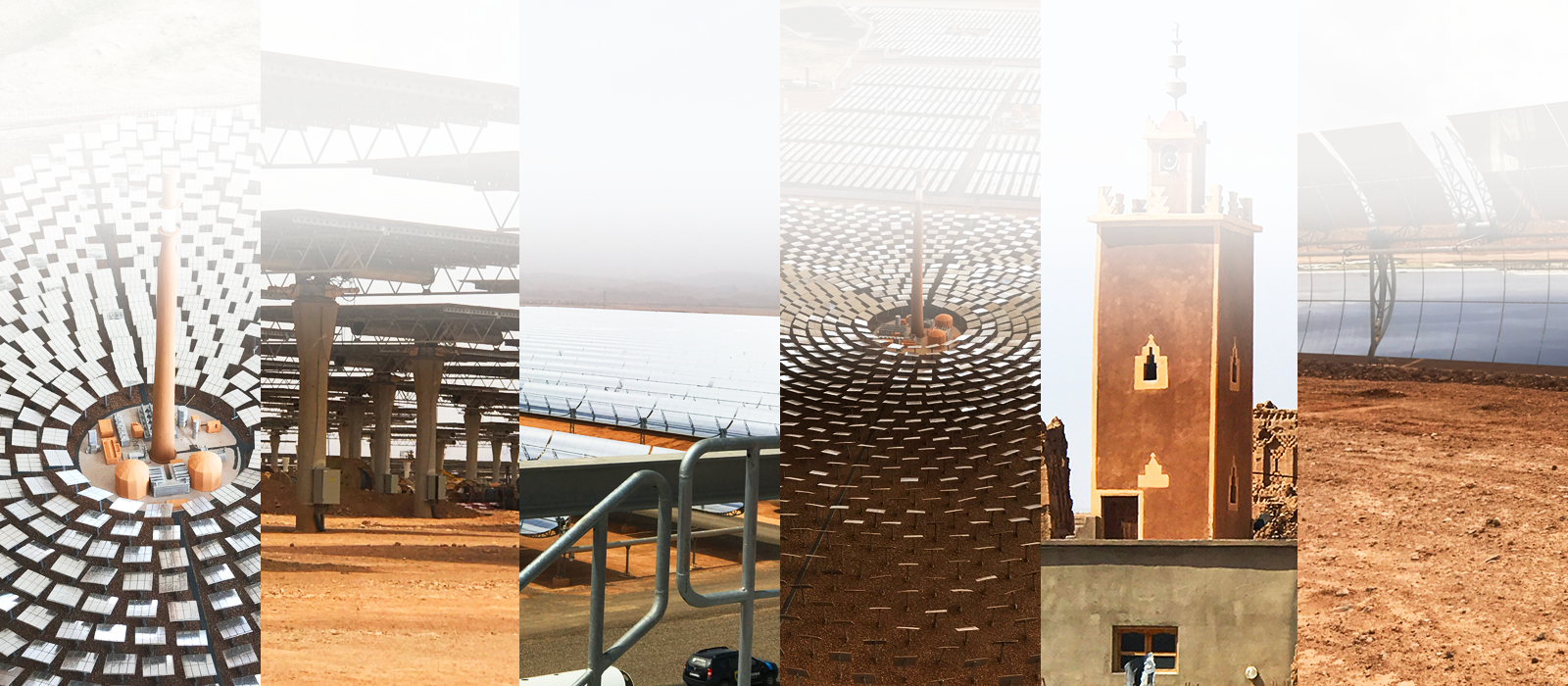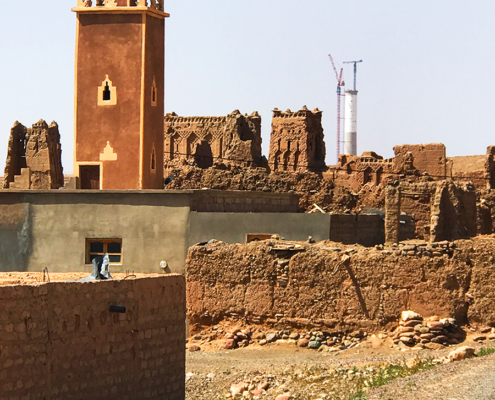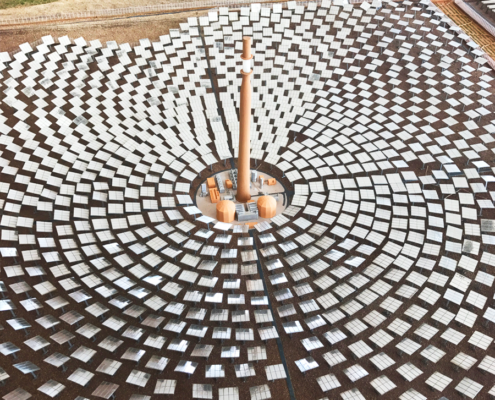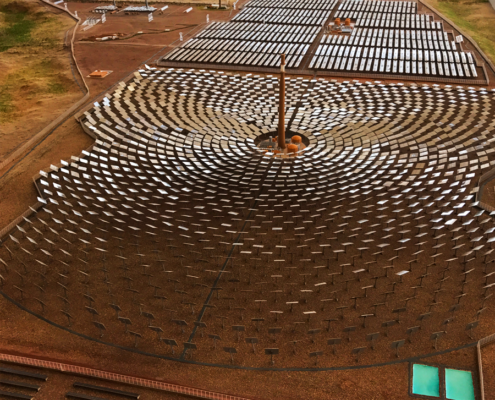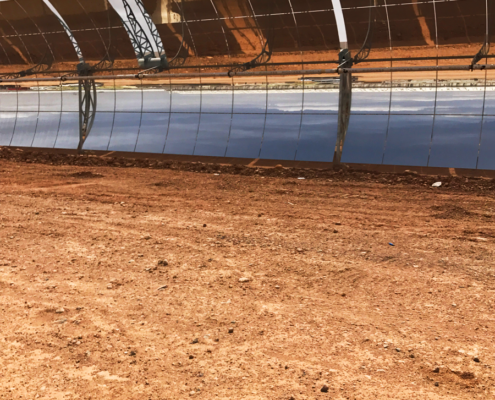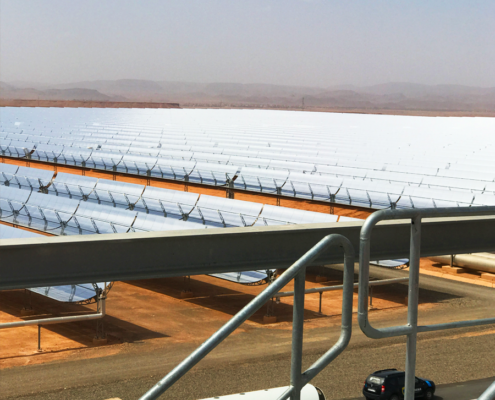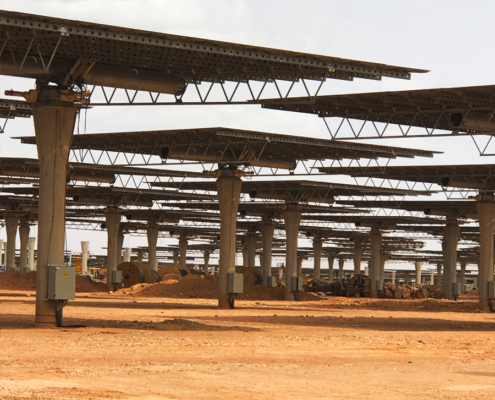Courage is fear that has said its prayers
By Liz Jensen
Home: the place one lives permanently, especially as a member of a family or household. Synonyms include habitat, domain, place of origin, cradle, domestic space.
I know a glaciologist who spends much of her time deep in ice. Like many of her colleagues, Birgitte has found and measured pieces of the climate jigsaw for herself. She can see how and where they fit in the future picture of our shared home, to the point where she sometimes wishes she knew less. Yet like many of her colleagues in the field, she incarnates a very human paradox.
To scientists like her, whether to bring another human life into the overcrowded, rapidly-warming Anthropocene presents not so much a question as a brutal dilemma. After some soul-searching, Birgitte decided to have a baby, despite knowing that before her son reaches the age of 100 that futurologists blithely forecast for him, he will inhabit a world inconceivably different from our own, most of it uninhabitable. When I ask her how she decided to take this colossal gamble, she goes silent for a moment.
Biology is the short, easy answer, she says eventually. But you can over-ride biology, and some choose to. The longer, trickier truth is cognitive dissonance.
Scott Fitzgerald said: “The test of a first-rate intelligence is the ability to carry two opposed ideas in mind at the same time and still retain the ability to function.”
Birgitte has first-rate intelligence. And she uses it, daily, to divide herself in two.
One version of her, the scientist, has its eyes wide open and it grieves.
The other, the mother, is blind. And with a great, deep force, it trusts.
***
In April 2015, the Saharan storms sent clouds of dust blowing 2,000 miles to southern England where it fell as “blood rain”. For a couple of weeks London wore a coat of gritty red. The natural phenomenon coincided with a heatwave: the Saharan dust, combined with wind-borne ammonia-based fertilizer and local discharges from traffic and industry caused a spike in air pollution. But the main topic of discussion during those odd, hot April days was not the dull, everyday fact of a dirty fossil-fuelled world but the exciting freakishness of the red grit.
The blood rain.
The choked, pinkish sky.
The trees, roads, cars, and buildings coated in granules.
Two years on, Article 50 has been triggered, a fractious post-Brexit Britain is unhitching itself from Europe, and once again London is decked in red. Not rusty Saharan dust this time, but Merrie-England, pillar-box, heritage, Virgin-logo red. It’s on life-size models of Royal beefeaters, on plastic phone booth piggy-banks, and on the Union Jacks that plaster umbrellas, boxer shorts, aprons, and mouse-pads: it’s as if, since the referendum, Yesteryear has foreseen a furiously themed future.
I’m escaping.
At Heathrow, I buy a plastic bottle of water from a display marked – oh clever, cynical marketers – REHYDRATION, millions of which end up daily in landfill, or in ocean gyres, or wash up on the shore of a Pacific atoll where hermit crabs set up home inside the heads of plastic dolls. On the plane I sip from it as I read an article about survivalists – many of them Silicon Valley billionaires – prepping for global catastrophe scenarios with bunkers, barbed-wire fencing, ammo and airstrips. Knowing how the system works, they’re aware that when the Big One comes, in whatever form, no government can help. They’ve given FEMA, the Federal Emergency Management Agency, a cheery nickname: “Foolishly Expecting Meaningful Aid”.
Like the hermit crabs, the preppers have found their plastic doll’s head on a distant atoll.
They’re all set to become its new, living brain.
Question: What are the first signs that your home is becoming unreliable?
Uncanny?
Threatened?
On fire?
Despite evidence including erratic seasons, disappearing wildlife, Biblical storms, vinegar seas and the greening Antarctic, not everyone feels ready to acknowledge the growing unhomeliness – the Germans call it Unheimlichkeit, the Danes uhygge – of our world. But as I read about the preppers it strikes me that no matter how fiercely we resist as individuals, our collective subconscious – call it the hive mind of our species – has not been idle.
It, too, has been busy prepping.
Ever since the great flood described in the ancient Mesopotamian Epic of Gilgamesh, apocalypse stories have been with us, seamlessly morphing to reflect the contemporary anxieties of successive eras. Nuclear holocaust was the nightmare-fuel of my own generation. Around the same time the BBC aired The Survivors, a post-plague drama that foreshadowed epidemics such as AIDS, bovine spongiform encephalopathy, bird and swine flu, SARS, Ebola, Zika and whatever is next on the grim roll-call of public health emergencies. At the turn of the century, the Y2K bug sparked new fears. Today, cyber-disruption and even collapse is no longer an if. Like the repercussions of anthropogenic ecological and climate disaster it is a when, a where, a how bad.
And all along, consistently and faithfully, the books, comics, screen entertainments and computer games that form the staples of popular culture have been actively responding. The Mad Max trilogy, which spawned one of the genre’s most successful video games, dates from 1979. It’s been a decade since Darwinian reality shows first began sending contestants into jungles to unearth roots, eat insects, drink urine and shed frustrated tears. Anyone who has encountered The Walking Dead or The Road, Margaret Atwood’s MadAddam trilogy or Emily St John Mandel’s Station Eleven, played Rage or Metro 2033 has consciously or unconsciously been referring to a road-map of the future.
In this era of preposterous dreams and dark nightmares, entertainment and doom are interconnected escape industries. Both are instructing us on how to either leave the neighbourhood, or hack the one we have.
Some journeys will be short, others long. As my plane begins its descent into the Moroccan desert town of Ouazazerte, I read about another desert, a planet 2.4 light years from us. The Earth-like Proxima B, I learn, “could support liquid water in a range of different orbital configurations”.
The headline suggests two options: A Fiery Hellscape or a Future Home.
Flip a coin.
Yet there’s a lacuna. Where is the apocalypse itself in these before-and-aftermath fantasies? In many such narratives, it is summarized as swiftly as possible or almost absent: a fait accompli. We have no trouble packing our Go-bag in expectation of a world-changing event. And some of us are positively eager to imagine the post-collapse. But almost without realizing it, in the process of inhabiting these two frames, we have edited out the central image of the triptych: the unheimlich, uhyggelig part where the Great Event unfolds and millions or billions die.
In Christopher Marlowe’s Elizabethan drama Dr Faustus, there is a moment when Faustus asks the Devil why he is on Earth, rather than in Hell.
“How comes it then that you are out of Hell?” He asks.
Mephistopholes replies: “Why this is Hell, nor am I out of it.”
***
The ball of fifteen-million-degree plasma we call the sun began 4.6 billion years ago with a cloud of gas and filth drifting through the galaxy, which collapsed into a nebula to form our solar system. Few organisms on Earth can survive without its seething fusion reactions. We know this viscerally and intellectually. No wonder ancient civilizations from the Egyptians to the Aztecs recognized our violent ruling star as an entity to be feared, worshipped and revered; no wonder it spawned a thousand myths and fictions. No wonder these include one of civilization’s best-known judgement narratives.
Playing with fire: used primarily to advise someone against a course of action that may result in an unpleasing outcome either for themselves or others around them.
When Prometheus commits the crime of stealing fire from Mount Olympus, he anticipates man’s inner pyromaniac. He knows the excited shiver the clever ape will feel on lighting a dry leaf, striking a match, or watching the edges of a flaming book become a blackened, rippled shore. Knows how the cleverness of the ape will expand when he connects fire and energy, fire and knowledge, fire and life, fire and death, and how those connections will conjure power. And so what? Prometheus is carelessly generous: he could be the god of laissez-faire. He has a hunch it’ll all work out. And if it doesn’t, then what could be more interesting? Let Homo Sapiens illuminate his caves, heat his palaces and hovels, grill octopi, burn incense and forests and heretics, make charcoal art, fuse chemicals, create Heimlichkeit and hygge, destroy evidence, invent the petrol-fuelled internal combustion engine, build the atom bomb, carbonize the world.
Lashed to a rock by the angry Zeus, with a weaponized eagle tearing out his liver every day, Prometheus pays the price of taking fire from the gods. Power and knowledge are interchangeable, so steal either one and you’re entering a world of pain: isn’t this the moral of all such narratives from the Garden of Eden to Frankenstein and a thousand Marvel storylines?
***
At one stage of our planet’s multi-billion-year life, the part of the Moroccan desert I am visiting, not far from where the Saharan sand travelled to coat London in red dust, was once the vast Tethys Ocean. As the aeons passed the tectonic plates shifted, crunching and collapsing land-masses across time-scales so dizzying that to imagine them we must stretch out an arm and say, feeling perhaps both proud and foolish: “If my armpit is the Big Bang then the last millimetre of my middle fingernail is the start of humankind.” The rock paintings of the first human settlers depict antelopes and cattle, but as mankind’s farming spread and intensified, the land became scraped first to scrub, then desert. The Berber origin story of this ecological shift, spun by the mythologizing spider of our storytelling brains, posits the desert as the garden of Allah, from which the Lord of the faithful removed all superfluous human and animal life so that there might be one place where he can walk in peace.
Near the pretty terracotta-coloured town of Ouarzazat in the Anti-Atlas the land is formed of striated plateaus called hamams and coarse flatlands rubbled with red stones. Its beauty is harsh, treeless, uncompromising. There are salt patches – ancient residue of the Tethys Ocean, a local man tells me – and desiccated river beds. It looks empty at first glance but in the cracks and gullies there’s a defiant thriving that is artificial in places, in others quiet and furtive; elsewhere wild, determined, and ingenious. Lizards scuttle over irrigation pipes. Hand-made bricks of straw and clay bake in the sun. The black commas on the hillside are goats. Here and there lie the incongruous remains of a thousand movie sets: Lawrence of Arabia was filmed here, and Babel, and Obelix and Asterix. Where water trickles in from the foothills of the Atlas Mountains farmers sing in chorus from sudden patches of vivid green. In a ruined Jewish hamlet, an elderly Berber man waters his herbs.
The scene that could be centuries old, were it not for the pylon, and the photovoltaic street-lamp, and behind it a concrete tower under construction. It doesn’t look like much from here. No wonder the Berber farmer pays it no heed as he tends his basil, his za’atar and his mint.
But from the viewing tower within the site, the world’s biggest and most ambitious solar installation, Noor (“light” in Arabic) I begin to grasp the almost hallucinatory scale of what is going on. Laughably, it’s the quaintly retro English exclamation “Cor Blimey” that flies unbidden from my mouth. But as a shortening of the phrase “God blind me”, it’s also apt. An endless, dazzling lake of glass is spread below. On rubbled soil scraped to pancake flatness, row upon row of curved mirrors reflect the cloudless sky and the blazing coin of the sun. There is something about the gleam of this vista, a trick of the light perhaps, which brings to mind the classic desert mirage of unattainable water, and with it the long-vanished Therys Sea.
But blink and it’s gone and I’m looking at what’s really there: money. A lot of it: 2.4 billion euros. Energy: when it’s complete, 580 megawatts’ worth in total, and almost continuous production. Ambition: it will become not just the African continent’s biggest solar construction, but the world’s.
The first, Moroccan-run phase of the project, Noor One, is already fully functional. Its 500,000 mirrors designed to pivot like sunflowers to follow the path of the sun. At full capacity it provides power to more than a million local people. To the right of its perimeter fence lies another vast enclosure containing its bigger, technically upgraded sister field, Noor Two. This will soon produce 200 megawatts of energy and along with Noor Three, offer surplus power to Algeria and Spain. Noor Three is of a different design: its seven thousand mirrors will not be curved, but flat, forming the glass skin of tilting platforms raised on concrete stilts. When all three sites are finished, together with the more traditional photovoltaic field Noor Four, the solar complex will occupy the same surface area as the kingdom’s capital, Rabat.
To help meet Morocco’s renewable energy goal of 52% by 2030, the project needs to be this ambitious. But like all colossally complex and costly projects, it has been controversial, and a long time evolving.
Originally devised by the European multi-national consortium Desertec to feed power into the European grid, the project foundered after a few years. There were infrastructural impasses and accusations of resource exploitation. There was Sturm und Drang. The phrase “expensive and Utopian” was used.
The first law of thermodynamics states that energy can be neither created nor destroyed, only converted from one form to another. After a series of energy shifts, new foreign and domestic stakeholders appeared, like the European Investment Bank and the European Commission’s Neighbourhood Investment Fund, along with the African Development Bank and Morocco’s popular, climate-conscious King Mohammed – and construction went ahead. Given that the project is now successfully en route, “Utopian” may no longer apply – but Noor still has detractors. While Noor One is staffed entirely by locals, Noor Two is largely run on Spanish expertise, and Noor Three’s workers are all Chinese. In the longer term, Moroccan engineers and manpower will take over the running of all the Noor fields. Until that time, in geo-economic and local employment terms, the critics have a case. But set their concerns against the backdrop of a dangerously over-heating world, the safety notice near the entrance to the complex re-casts itself as an ecological reminder:
A Mistake you See
But Do Nothing to Fix, becomes
Your Mistake Too.
As he shows me around, the engineer Tarik Bourquouquou, a defector from what he refers to as the “sinking ship” of the oil industry, explains how the sun’s rays superheat an oil-like heat transfer fluid that boils water to produce steam which drives a turbine , converting the heat into mechanical and then electric energy. He compares Noor Two’s processes to the biology of a creature that consumes light.
“The mirrors are its mouths. The control room is its brain, the communication cables its nervous system, and the instruments its eyes” he says. Its bones are the steel structures that house the massive pumps at the heart of the plant which circulate the heat transfer fluid through arterial pipes, from the solar field to the steam generation or to energy storage in the form of molten salt. That salt, which can keep heat for seven hours, is the fat. The HTF is cleaned by the kidney-like filtration system.
His analogy reminds me of other creatures that have lived here, of the desert’s reputation as a fossil paradise, and of the extraordinary dinosaur remains unearthed here recently. All dinosaurs are freakish, but the newly-discovered aquatic, carnivore Spinosaurus was off the scale, with a sail on its spine, paddled feet, and the snout and jaws of a crocodile. In a local souk, I bought a beautiful trilobite specimen: I feel the heft of aeons in my pocket as Tarik Bourquouquou and I cruise bumpily in a four-by-four between the thousands of monumental concrete platforms on stilts, and I wonder what this place will look like when Birgitte’s great-grand-children are a century old. A fiery hellscape or a future home?
Still under construction, Noor Three resembles a great prairie of flat-roofed petrol stations. By 2018 , each flat roof will be clad in glass and tilt to reflect sunlight onto the top of the central tower, shunting steam and molten salt up and down to mechanize energy. The light at its tip will be too dazzling to look at with the naked eye.
God blind me.
“It will shine like the sun,” says Tarik Bourquouquou.
I want to know what might go wrong. “Cyber collapse?”
“It won’t affect us,” he says. “It’s a closed system.”
“A plague of locusts?”
“Same issue as sandstorms. The glass is very tough. There’s a washing system at Noor One, using water pumped from a nearby dam.”
“So how could it fail?”
He laughs. “The sun might not rise in the morning.”
Ah, the sun. This is where Noor really started: with a single statistic. In six hours, the world’s deserts get enough free energy from the sun to power the world for a day.
Wind, too, is free.
If there were clouds in the blue Moroccan sky, they might spell DUH.
Another Berber saying: One vibration awakens all others of a particular pitch.
Renewable energy is a particular pitch.
***
Let’s come straight out with it: with the nest fouled, the population mushrooming, and resources limited, mankind’s home is becoming unheimlich and uhyggelig, and is set to become more so. The question of how to re-cast our existential comfort has led to some drastic thinking and some audacious plans. We could live in bubbles like the preppers, send sulphur or water droplets into the stratosphere to deflect sunlight, nuke a volcano and take shelter beneath its cooling cloud of ash, travel 4.2 light years to Proxima B, the fiery hellscape or future home.
But there are more sober forms of housekeeping. By the time Birgitte’s son reaches adulthood, the same nuclear reactions that sparked and maintained life on Earth may – after decades of intensive work and billions of euros – supply limitless fusion energy at minimal risk. In the meantime, the storage capacity of solar batteries is improving by the day. Soon we’ll be drawing carbon from the air to manufacture bricks. The cloned-meat hamburger that once cost millions of dollars now costs fourteen. With wave power still barely tapped, and wind not yet even in its prime, and with solar facilities like Noor springing up across the globe, perhaps all our furious mental prepping will prove premature.
“Once upon a time,” Birgitte’s son may tell his young daughter, “our ingenuity saved us from the brink.”
Question One: What if that doesn’t happen in time?
Question Two: What if it does?
Question Three: If you could only ask Question One or Question Two, which would you choose?
Click an image to enter gallery mode.
What’s Happening
 Grief in the time of Covid: some reflections on lossApril 4, 2020 - 9:13 pm
Grief in the time of Covid: some reflections on lossApril 4, 2020 - 9:13 pm Writers Rebel is bornOctober 24, 2019 - 10:50 pm
Writers Rebel is bornOctober 24, 2019 - 10:50 pm Buy The Ninth Life of Louis Drax DVD on AmazonDecember 21, 2016 - 10:40 pm
Buy The Ninth Life of Louis Drax DVD on AmazonDecember 21, 2016 - 10:40 pm

